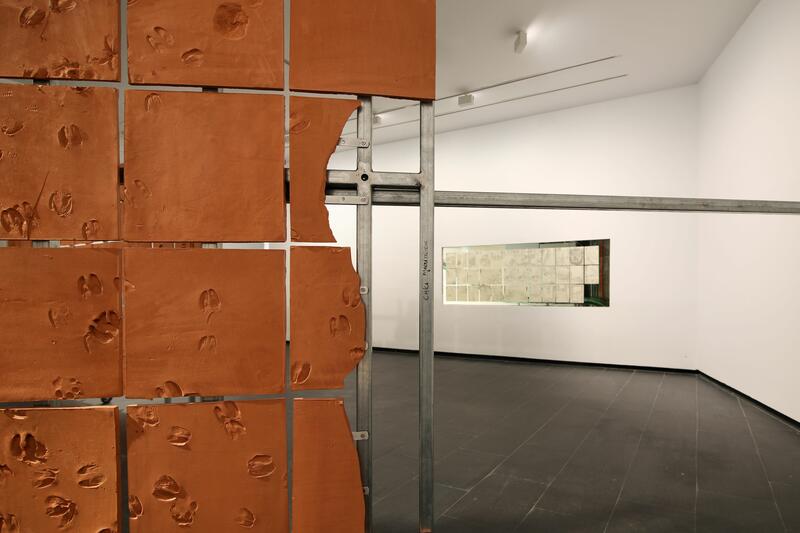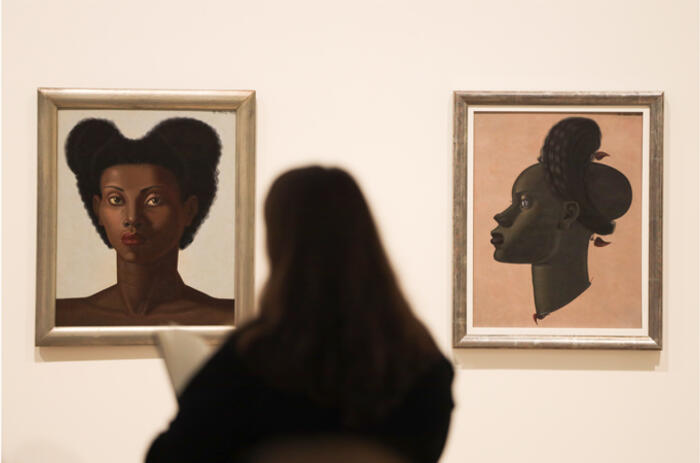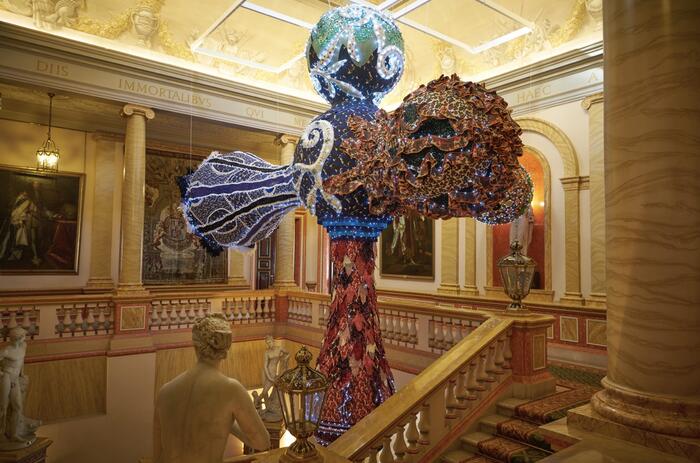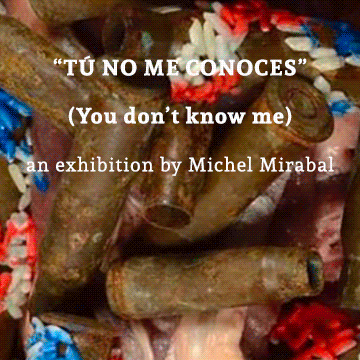THE TRANSFORMATION OF THE IMMATERIAL IN JORGE SATORRE
Ría, Jorge Satorre’s (Mexico City, Mexico, 1979) first exhibition in Spain, can be approached as a compendium of the sublimation of his ideas and research into the conceptual and material limits of the different practices he has engaged in. The show, curated by Max Andrews and Uruguayan Mariana Cánepa Luna for the Museo Centro de Arte Dos de Mayo, is thus conceived as an immersive space in which those very boundaries are blurred in favor of a deeper observation of processes.

Satorre has spent years working on the material and the immaterial, both in tradition and in production, and on the idea of dialogue between his work and space. His approach begins with a primary interest in drawing and illustration, which quickly gives way to a questioning of the corporeal and spatial constraints that condition artistic and craft practices. More recently, as in the project presented in this exhibition, his focus has shifted to the materialization and documentation—if it can be called that—of the transformation processes from idea to final form.
Ría presents relatively recent work, produced between 2013 and 2025. During this period, the Mexican artist begins to explore the need to understand what exists between his creative and formal processes—two interrelated fields, yet also in need of deep personal analysis. The result appears to be a constant confrontation with difficult-to-resolve dichotomies, although all of them revolve around the notion of distance, both physical and figurative, as an instrumental element in the search for an answer.
-
Jorge Satorre: Ría, en el Museo Centro de Arte. Foto: Sue Ponce
-
Jorge Satorre: Ría, en el Museo Centro de Arte
-
Jorge Satorre: Ría, en el Museo Centro de Arte. Foto: Sue Ponce
-
Jorge Satorre: Ría, en el Museo Centro de Arte. Foto: Sue Ponce
-
Jorge Satorre: Ría, en el Museo Centro de Arte. Foto: Sue Ponce
In the specific processes of construction, as well as in the broader dilemma that the exhibition addresses, the treatment of materials, the arrangement, and the artistic techniques applied to achieve the final form all seem fundamental. Without them, the idea could never evolve into something physical—an inescapable dimension within the tradition of certain artistic tendencies—and therefore would cease to exist on both objective and conceptual levels.
There is a sense of scalability in his approach that alludes to the success—or the attempt at it—of translating paper into other materials, from the initial idea to a tangible viability, where the result distances itself to become a kind of certification of the treatment process. The working surface emerges as an essential element: the acts of alteration may be understood as direct actions upon it, but the fundamental transformation in Satorre’s work also stands apart, responding with a voice of its own.
The understanding of space appears not only as physical extension but as a kind of architectural component that becomes integrated into the process through which the exhibition of the work supports the notion of development. Within those distances and measurements lie reflections on dislocation and functionality—elements tied to the incorrect uses of objects and materials, which are likewise transgressed at the level of thought.
Jorge Satorre. Ría can be seen until August 31 at the Museo Centro de Arte Dos de Mayo, Constitución 23, Móstoles (Spain).











